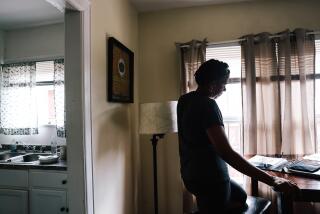DNA evidence links Boston Strangler suspect to killing
- Share via
On Jan. 4, 1964, young Mary Sullivan was strangled and raped in her Beacon Hill apartment in Boston. Among the evidence collected by police was seminal fluid from her body and from a blanket.
DNA testing did not exist back then, but the Boston police crime lab has held on to the evidence in hopes it might one day lead to the killer of the 19-year-old.
On Thursday, authorities in Boston announced that the nearly 50-year-old evidence has produced a DNA match that links Albert DeSalvo, long suspected as the Boston Strangler responsible for 11 slayings, to Sullivan’s death.
Breakthroughs in DNA testing found a “familial match” between the killer’s seminal fluid and a living nephew of DeSalvo, who was stabbed to death in prison in 1973. A fugitive squad cop from the Boston Police Department followed the nephew and recovered a discarded water bottle containing his DNA, authorities announced at a news conference in Boston.
“We got a hit,” Boston Police Commissioner Edward Davis said of the DNA testing.
Suffolk County Dist. Atty. Daniel F. Conley said the DNA match ruled out 99.99% of all other males. “There was no forensic evidence to link Albert DeSalvo to Mary Sullivan’s murder until today,” he said.
Though DeSalvo, an Army veteran with a wife and children, had confessed to the Strangler killings, he was never charged or convicted in connection with the slayings.
The killings terrorized the city — residents raced to buy extra locks and guard dogs — and achieved cult status with “The Boston Strangler” movie starring Tony Curtis as DeSalvo.
DeSalvo eventually recanted, and doubts about his confession have persisted. He was serving a life sentence for unrelated armed robberies and sexual assaults when he was killed in a Massachusetts prison.
Conley said he expected a match to DNA from DeSalvo’s remains after they are exhumed this week under a judge’s order. Authorities emphasized that the DNA evidence applies only to Sullivan among the Strangler victims, ages 19 to 85, who were raped and killed in the Boston area from 1962 to 1964.
“We are aware of no other DNA evidence that has survived from any of the other 10 murders we have been looking at,” said Massachusetts Atty. Gen. Martha Coakley.
Among those who fought to clear DeSalvo’s name was Sullivan’s nephew, Casey Sherman. But at the news conference, Sherman said the new evidence “provides an incredible amount of closure” for the Sullivan and DeSalvo families.
“I only go where the evidence leads,” he said.
Police tried and failed several times over the years to obtain DeSalvo’s DNA. They tried to extract DNA from saliva on envelopes he sent from prison, Conley said.
The Sullivan evidence was also tested over the years, but parts of the samples were destroyed each time. Boston Police Crime Lab director Donald Hayes decided several years ago to hold off on further testing to await advancements in DNA testing and forensic technology.
Davis, the police commissioner, said Hayes told him in 2006 that the lab had retained and stored six samples from Sullivan’s body and the blanket. They remained on slides in storage until last year, when the National Institute of Justice awarded the department a $300,000 grant for cold-case investigations.
The Sullivan slides were sent separately to two independent laboratories for testing.
“There was a period of very intense waiting,” Davis said.
Ultimately, one lab was able to extract identifiable DNA from the seminal fluid. But police still needed a DNA sample from a male DeSalvo relative; Y chromosomes are passed directly from father to son.
The fugitive squad officer, an expert in surveillance, was dispatched to follow DeSalvo’s male relatives. Authorities did not directly approach the family to request a sample for fear that they would not cooperate, Conley said.
An attorney for the DeSalvo family, Elaine Whitfield Sharp, called the DNA evidence strong but not definitive. She said the family had offered to provide DNA in the past and was angry to learn of the secret surveillance, which Sharp called an “unwarranted invasion of privacy.”
Experts said the developments demonstrate the extent to which DNA extraction techniques have advanced over the last decade.
“It shows we can do this type of testing now,” said Michael Coble, a forensic biologist with the National Institute of Standards and Technology. He helped lead the international effort to identify the Romanov children from czarist Russia.
In the Sullivan case, the advancements provided a measure of closure for two families tormented by uncertainty for nearly 50 years.
Sherman wrote a book, “A Rose for Mary,” that chronicled his own decade-long investigation into the case and pointed to other suspects besides DeSalvo. His mother, Diane Dodd, was 17 when her sister, who had graduated less than two years earlier from Barnstable High School, was killed.
Sherman described his aunt as “the joy of her Irish Catholic family.”
“I’ve lived with Mary’s memory every day my whole life,” Sherman said, his voice breaking. “And I didn’t know, nor did my mother, that other people were living with her memory as well.”
Sherman said he felt no animosity toward the DeSalvo family. “We’ve been to hell and back together as two families,” he said.
More to Read
Sign up for Essential California
The most important California stories and recommendations in your inbox every morning.
You may occasionally receive promotional content from the Los Angeles Times.














